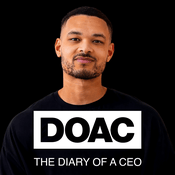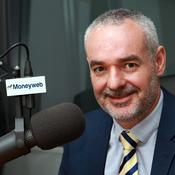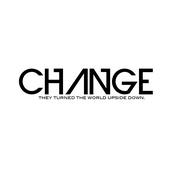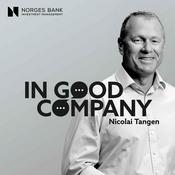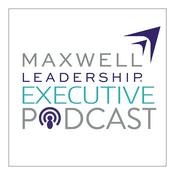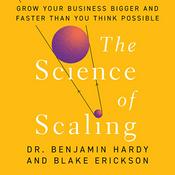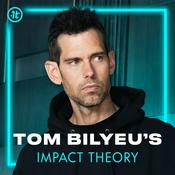Available Episodes
5 of 487
- Would You Gift Sewage for Christmas?What Wastewater Products Can You Actually Buy for Christmas? 🙌 Supporters 🙌 A big thank you to my partner SimpleLab: https://link.dww.show/simplelab My best water tech analysis straight to your inbox: https://www.linkedin.com/build-relation/newsletter-follow?entityUrn=6884833968848474112 ⬇️ IN THIS VIDEO ⬇️ This special episode showcases 17 commercially available products made from recycled wastewater, desalination brine, and industrial water byproducts. From ski resort snow to table salt, beer to bourbon, cosmetics to clothing, these items prove that circular water economy isn't just theory—it's hitting store shelves as legitimate luxury goods and everyday essentials. 🌶️ KEY SPICES 🌶️ 🎿 Big Sky Resort now makes artificial snow from recycled village wastewater using Montana's largest zero liquid discharge system 🧂 Desalination brine transforms into gourmet table salts and superfood ingredients instead of marine discharge 🍺 Reused wastewater beer, rainwater whisky, and coffee-waste vodka prove beverage innovation is real 👖 Jeans from Everlane and Triarchy achieve 95-98% water recycling through closed-loop finishing 🧴 L'Oreal's Burgos "waterloop factory" reuses 100% of process water for Kerastase production 🧪 Hungarian startup Cycle ferments sewage sludge into bio-acid cleaners shipped worldwide 🥜 IN A NUTSHELL 🥜 Can you really eat products from desalination waste? Aqualia's Alma de Mar table salts and UAE-grown Salicornia demonstrate that brine valorization creates food-safe, even gourmet products through controlled crystallization and aquaponic farming. How are beverage companies using wastewater? H2O Innovation, Epic Cleantec, and Singapore's NEWBrew produce beers from purified wastewater, while Good Vodka upcycles 15 million tons of annual coffee cherry waste and Old Humble proofs whisky with collected Texas rainwater. What makes water-smart clothing different? Everlane's Saitex partnership recycles 98% of process water, Triarchy replaces chemical bleaching with ozone, and Girlfriend Collective turns plastic bottles into sportswear while capturing microplastics. Which home products close the water loop? Porcelanosa ceramics operates zero liquid discharge, EnviroCopy paper circulates water 30 times per production cycle, and Vuna's Aurin turns urine into nitrogen fertilizer now scaling across Europe. ⏰ TIME STAMPS ⏰ 00:00 17 Wastewater Products 00:17 Big Sky Montana 04:31 Alma de Mar 06:12 Salicornia 07:49 Tasting 09:34 They almost made it... 10:31 H2O Innovation Pale Ale 12:43 Good Vodka 14:24 Old Humble Special Reserve 16:16 Naif Face Scrub 18:27 Kerastase by l'Oreal 20:09 Everlane Jeans 22:29 Triarchy Jeans 23:38 Girlfriend Collective Tank Top 25:07 Himba Fish Cuff 25:32 Innorecycling Water Can 25:59 Aurin by Vuna 27:31 Porcelanosa Tiles 28:56 Sustana Enviro Copy 30:15 Cycle Biocleaners 32:02 Test Results 33:03 An Epic Surprise...Hosted on Ausha. See ausha.co/privacy-policy for more information.--------33:36
- Ovivo's Bold Vision: Back to Full Size in One Decade!How Will Ovivo Rebuild to Full Size in 10 Years After the Ecolab Deal?🙌 Supporters 🙌 A big thank you to my partner SimpleLab: https://link.dww.show/simplelab ⬇️ IN THIS EPISODE ⬇️Ovivo is a global water treatment technology provider entering a transformative new chapter after spinning off its electronics division to Ecolab for $1.8 billion. Under Ski on Water's ownership, Ovivo is now positioning itself for aggressive growth through industrial expansion, silicon carbide membrane innovation, and PFAS destruction capabilities across North America and Europe.This episode features Reinhard Hubner, CEO of SKion Water with years of water industry M&A experience; Elena Bailey, Director at Ovivo North America with decades of experience in water technology who joined through an acquisition in 2006; Mike Snodgrass, membrane technology specialist with 25+ years experience including hands-on polymeric membrane development; and Sebastian Andreassen, co-founder and leader of Ovivo's Cembrane silicon carbide membrane manufacturing operations with facilities in Denmark and Texas.🌶️ KEY SPICES 🌶️🔬 Silicon carbide membranes deliver breakthrough flux rates at low pressure with hydrophilic, chemically inert properties that outperform polymeric alternatives💧 Double-digit percentage R&D investment funds innovation without a centralized research department—product managers drive patented solutions🏭 European industrial expertise from a decade of experience in operations transfers directly to North American expansion through people-first integration⚗️ PFAS destruction technology from E2Metrix leverages existing municipal customer relationships for rapid market entry🤝 Long-term ownership culture keeps acquired company founders engaged for 7-9+ years post-acquisition🥜 IN A NUTSHELL 🥜What is the 10-year vision for Ovivo? SKion Water plans to rebuild Ovivo to its pre-transaction size through industrial platform acquisitions in North America, silicon carbide membrane scaling, and PFAS treatment commercialization.Why focus on industrial water treatment? Municipal operations run independently with proven teams, while industrial requires European expertise transfer and platform acquisitions to replicate the 350 million euro success achieved through EnviroChemie.How does Cembrane's silicon carbide differentiate? Unlike polymeric membranes, silicon carbide is hydrophilic, extremely porous, and chemically inert—enabling applications in drinking water, sand filter replacement, and backwash recovery that competitors cannot match.What are the capacity expansion plans? Cembrane's manufacturing will increase 50% in 2026 and double by 2027, with Texas production providing tariff protection and BABA compliance for North American municipal projects.Where does PFAS fit the strategy? E2Metrix destruction technology pairs with existing SSE membrane installations at water plants, creating bundled solutions that leverage Ovivo's installed base relationships with municipal customers.#️⃣ Mentioned Links #️⃣Ovivo's website: https://www.ovivowater.com/en/My WEFTEC coverage: https://www.youtube.com/watch?v=ZAb9bDjpOsEHosted on Ausha. See ausha.co/privacy-policy for more information.--------1:03:01
- What Happens When You Build a Water Membranes Factory Just to Prove a Point?How Is Aqua Membranes Scaling 3D-Printed Water Membranes Spacers from Garage Startup to 200,000 Square Foot Manufacturing Facility? Let's find out!More #water insights? Connect with me on Linkedin: https://www.linkedin.com/in/antoinewalter1/🙌 Supporters 🙌 A big thank you to my partner SimpleLab: https://link.dww.show/simplelab⬇️ IN THIS VIDEO ⬇️Aqua Membranes manufactures reverse osmosis membrane elements with 3D-printed spacers that reduce energy consumption and pressure drops in industrial water treatment across mining, semiconductor, and beverage sectors. Founded 15 years ago by Rodney Herrington in his garage, the water membranes company now operates from Albuquerque and a new 200,000-square-foot Knoxville facility led by CEO Craig Beckman and CTO CJ Kurth.🌶️ KEY SPICES 🌶️🖨️ Proprietary 3D printing technology creates Fibonacci spiral-patterned spacers that optimize fluid flow and reduce fouling compared to traditional mesh spacers found in water membranes⚡ Energy efficiency gains through reduced pressure drops enable customers to lower operating costs and extend cleaning cycles in reverse osmosis systems🏭 Vertical integration strategy from material science through full element manufacturing de-risks technology adoption for major water membranes manufacturers🎯 Strategic customer validation from Fortune 500 companies including Coca-Cola, Micron Technology, and exclusive distribution partnership with Osmo Flow in Australia📈 Scalable manufacturing platform with capacity for 25,000 elements annually in current configuration and 9x expansion potential in the Knoxville facility🥜 IN A NUTSHELL 🥜Why can't Aqua Membranes just license their spacer technology to major water tech manufacturers? The membrane industry requires extensive real-world validation before adopting new materials, forcing innovators to manufacture complete elements at a commercial scale before established players will consider licensing.What makes 3D-printed spacers superior to traditional mesh? The Fibonacci spiral pattern eliminates straight-line flow channels that cause fouling, while UV-cured polyacrylate provides precise control over channel geometry for customized applications.How did Aqua Membranes choose Knoxville for manufacturing expansion? After evaluating 20 U.S. and Mexican locations, they selected Knoxville for its business environment, educational resources, and capacity to support 95 jobs with multi-shift expansion potential.What role does Albuquerque play now that Knoxville is operational? Albuquerque transitions to R&D, focusing on co-creation with customers, testing new patterns and applications, including gas separation, while maintaining identical equipment to troubleshoot production issues.When will the new printing technology become available? The second-generation process moves to Knoxville in March 2025, with commercial launch targeted for late 2026, offering faster speeds, improved tolerance, and lower costs.#️⃣ Mentioned Links #️⃣Aqua MembranesOsmofloHosted on Ausha. See ausha.co/privacy-policy for more information.--------28:25
- The Most Ridiculous Water Technology I've Ever Analyzed (it was worth it!)Can Cloud Harvesting Revolutionize Water Production? A Deep Dive into AirHES Technology🙌 Supporters 🙌 A big thank you to my partner SimpleLab: https://link.dww.show/simplelab ⬇️ IN THIS EPISODE ⬇️AirHES is a proposed atmospheric water harvesting technology that uses aerial collection systems (kites or balloons) with specialized mesh to capture cloud droplets. The collected water flows down through hoses, generating both pressurized freshwater and hydropower from the natural pressure head, claiming to potentially deliver the cheapest water and electricity on Earth.This episode features my rigorous "10th man doctrine" analysis—applying contrarian due diligence to unconventional water technologies—drawing from my 15 years in the water and wastewater industry, including experience evaluating emerging technologies from desalination to atmospheric water generation.🌶️ KEY SPICES 🌶️☁️ Cloud-level water capture using proven fog collection mesh technology with documented efficiencies from existing literature💧 Dual revenue streams from both freshwater production (modeled at $0.10-0.21/m³) and hydropower generation from vertical pressure head🎯 Potential niche applications for remote, cloudy, inland communities needing 10-200 m³/day where traditional desalination faces infrastructure challenges🔬 Rigorous physics-based analysis revealing realistic costs of $0.30-0.60/m³ after accounting for downtime, maintenance, and operational constraints⚖️ Technology requires overcoming complex engineering trade-offs between pipe weight, friction losses, buoyancy, wind loading, and airspace regulatory hurdles🥜 IN A NUTSHELL 🥜Does the technology actually work? The mesh physics and fog collection principles are sound and well-documented, but cloud-level capture efficiency, uptime, and real-world performance remain unproven until multi-month instrumented pilots are conducted.What are the biggest technical challenges? Running kilometers of pressure hoses vertically requires solving complex trade-offs between pipe weight, friction losses, buoyancy, wind loading, and material costs—issues that significantly impact economic viability.Where could AirHES actually succeed? The technology shows promise for remote, persistently cloudy inland communities far from coastlines, mining camps at elevation, and island interiors where traditional reverse osmosis faces permitting barriers or extreme infrastructure costs.Is the electricity generation worthwhile? Power output represents only ~8% of revenue in AirHES's own models, with typical systems generating just 2-3 kW—barely enough to power a hair dryer—making it more of a distraction than a selling point.Why pursue weird ideas like this? Taking unconventional technologies seriously, even when flawed, expands the "adjacent possible" in water innovation, generates valuable insights, and prevents the sector from getting trapped optimizing only conventional solutions like reverse osmosis.#️⃣ Mentioned Links #️⃣AirHES Technology Packy McCormick's "Not Boring" newsletterSend me your ideas: [email protected] on Ausha. See ausha.co/privacy-policy for more information.--------36:43
- What Does a Billion-Dollar Company Exit Really Look Like?How Does Water-as-a-Service Drive Billion-Dollar Exits in Infrastructure Investment? 🙌 Supporters 🙌 A big thank you to my partner SimpleLab: https://link.dww.show/simplelab ⬇️ IN THIS VIDEO ⬇️ Seven Seas Water Group is a vertically integrated water infrastructure platform that designs, builds, finances, operates, and maintains water and wastewater treatment facilities under long-term service agreements. The company recently completed a successful company exit from Morgan Stanley Infrastructure Partners to EQT Infrastructure, operating over 210 water-as-a-service contracts across the Caribbean and United States with particular expertise in brackish water desalination and decentralized treatment systems. Henry Charrabe is the CEO of Seven Seas Water Group, who led the company through a successful four-year transformation and company exit, previously serving in executive roles at Fluence Corporation, and is recognized for pioneering the application of water-as-a-service business models in US municipal and industrial markets. 🌶️ KEY SPICES 🌶️ 💰 Vertically integrated platform - Seven Seas handles design, engineering, financing, construction, and operations in-house, eliminating margin stacking for lower costs and faster execution than multi-partner water tech competitors⚡ Proven track record at scale - 210+ active water purchase agreements with 15-30 year terms demonstrate repeatable success new entrants cannot easily replicate🔄 Patient capital meets expertise - The company exit proves infrastructure investors holding 4+ years combined with deep water knowledge generate exceptional returns in underinvested US infrastructure📊 Public vs private dynamics - Public water equities offer lower risk and liquidity; private funds deliver superior returns for patient capital—both forming a necessary growth ecosystem🥜 IN A NUTSHELL 🥜 Why is water-as-a-service winning? Performance-based contracts align incentives—investors only get paid when delivering contracted water quality and quantity.What makes the US market attractive? Massive infrastructure underinvestment, creditworthy municipal off-takers, and decentralized systems create exceptional deployment opportunities.How do private and public returns differ? Private water investments achieve 10x returns with patient capital, while public equities deliver 14-15% annually with lower risk and immediate liquidity.Why fewer IPOs today? Cyclical markets favor private-to-private exits when strategic buyers offer better valuations than public market multiples.What's the biggest opportunity? Reducing waste beats new supply—California loses 32% to inefficiencies, making conservation more economically attractive than desalination.#️⃣ Mentioned Links #️⃣ Seven Seas' websiteLoughlin Water PartnersOrange Ridge CapitalRobin Castelli's book⏰ TIME CODES ⏰ 00:00 Live from NYC's Climate Week 04:00 Henry Charrabé (Seven Seas Water) 25:49 John Rosenberg (Loughlin Water Partners) 40:08 Robin Castelli (Orange Ridge Capital) 50:01 Closing Hosted on Ausha. See ausha.co/privacy-policy for more information.--------51:16
More Business podcasts
Trending Business podcasts
About (don't) Waste Water! | Water Tech to Solve the World
❓ Ever wondered how the #WaterIndustry was reacting to our World's Water Challenges? Water Scarcity? #SDG6? PFAS? Climate Change? Circular Economy? Digitization and Smart Water?
💪 Get the Water Market pulse for free. In one hour per week, while you do the dishes!
📈 We talk water investment, water tech, water entrepreneurship and water market with entrepreneurs, thought leaders, book authors, scientists, investment funds, VCs, and C-Level experts from water majors.
➡️ Leverage their insights, advice & experience and ensure to stay on top of best practices
🗓️ Tune in every Wednesday (don't miss out! 😅)
🌐 Find all the detailed episode notes, interviews, infographics, and more at http://dww.show
Currently in its 10th Season, the "(don't) Waste Water" podcast has already welcomed around 250 guests from Water Majors (SUEZ, Veolia, Jacobs, Xylem, Kemira, Evoqua, Aquatech, SKion Water...), Scale-Ups (Cambrian Innovation, Epic Cleantec, Gradiant, Liqtech, 374Water, Gingko Bioworks...), Start-Ups (Puraffinity, KETOS, 120Water, ZwitterCo, Membrion, Source...), Universities (Berkeley, the Columbia Water Center), Investment Funds (Sciens Water, Mazarine, Burnt Island Ventures...), Business Accelerators (Imagine H2O, Elemental...), Book Authors (Seth Siegel, David Sedlak, David Lloyd Owen...) or Market Intelligence Companies (BlueTech Research, Global Water Intelligence, World Bank, OECD, Isle Utilities...). Or simply water legends like Gary White, Mina Guli or Andrew Benedek!
On the "(don't) Waste Water" podcast, I strive to make the Water Industry easy to understand for everyone, starting with water professionals, executives, and investors. Hence, he opens the microphone to seasoned, inspirational water experts to discuss their field of excellence.
No one can claim an all-around in-depth understanding of a matter as complex as Water. But piece by piece, you can rebuild the puzzle. With curiosity, patience, and passion, Antoine Walter explores topics such as Advanced Treatment Technologies, Water-Energy Nexus (Hydrogen, Lithium...), PFAS removal, Nature-Based Solutions, Wastewater Reuse, Distributed Water Treatments, Water Finance, and Water Entrepreneurship.
I actually firmly believe that regular listeners of the "(don't) Waste Water" podcast may, in the end, claim a "Water MBA!"
A particular field of interest is how innovation forms, grows and gets widely adopted in a complex and conservative field like the Water Industry. This may be one of the keys to achieving the United Nations Sustainable Development Goal n°6 - #SDG6.
Oh, and in short, about me: I'm a water engineer turned avid student of the water business, market, finance, and tech. I'm married, a happy father of three, and I'm French (nobody's perfect 😅).
Hosted on Ausha. See ausha.co/privacy-policy for more information.
Podcast websiteListen to (don't) Waste Water! | Water Tech to Solve the World, Prof G Markets and many other podcasts from around the world with the radio.net app

Get the free radio.net app
- Stations and podcasts to bookmark
- Stream via Wi-Fi or Bluetooth
- Supports Carplay & Android Auto
- Many other app features
Get the free radio.net app
- Stations and podcasts to bookmark
- Stream via Wi-Fi or Bluetooth
- Supports Carplay & Android Auto
- Many other app features


(don't) Waste Water! | Water Tech to Solve the World
Scan code,
download the app,
start listening.
download the app,
start listening.

